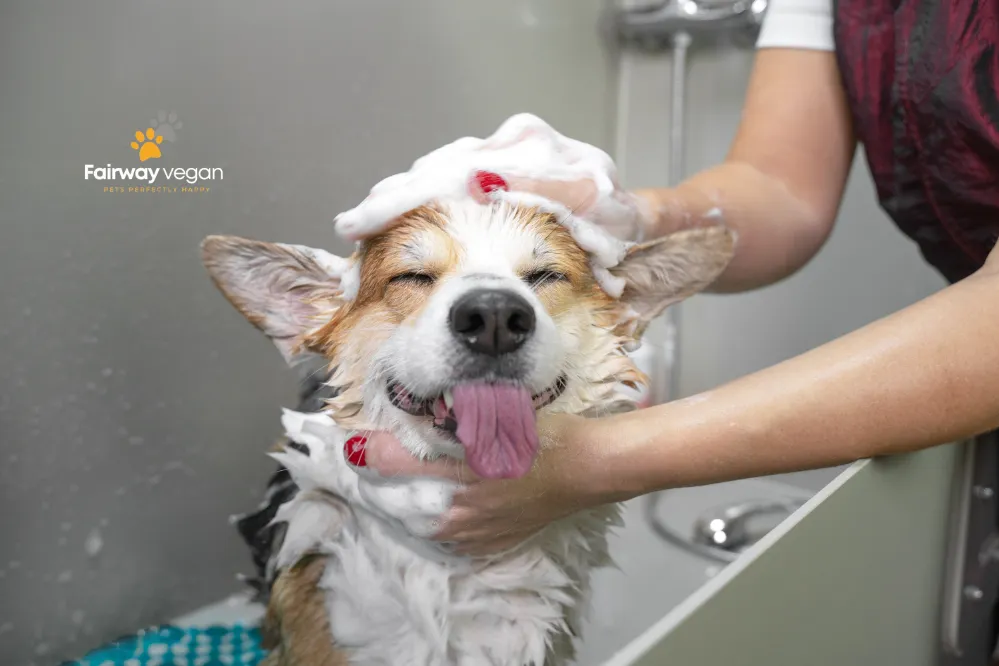Dog Grooming Made Easy: Must-Have Tools, Costs, and Pro Tips!

Grooming your dog is an essential aspect of pet care that not only keeps them looking their best but also ensures their health and comfort. Regular grooming helps prevent matting, reduces shedding, maintains skin health, and allows you to check for potential health issues like ticks, fleas, or skin infections. Investing in the right dog grooming tools enables you to maintain your dog’s hygiene and appearance at home, saving you time and money on professional grooming services.
Fun Fact: Did you know that regular grooming can improve your dog’s blood circulation and reduce stress levels? It’s a great way to bond with your furry friend while keeping them healthy.
Cost Comparison: Professional Grooming vs. At-Home Grooming

Professional dog grooming services typically range from $30 to $90 per session, depending on factors such as your dog’s size, breed, coat condition, and your location. For instance, grooming a small dog may cost around $40, while larger breeds can cost up to $75 or more.
In contrast, grooming your dog at home involves an initial investment in quality grooming tools, which can range from $100 to $200. While the upfront cost is higher, these tools can be used multiple times, making at-home grooming a cost-effective option in the long run. In the USA you can also benefit from mobile dog grooming services.
6 Must-Have Dog Grooming Tools At Home
Here’s a breakdown of the essential dog grooming tools every pet owner should have:
Brushes and Combs
Slicker Brush: Ideal for removing tangles and mats, especially in long-haired breeds.
Bristle Brush: Perfect for short-haired dogs to remove loose fur and distribute natural oils.
Undercoat Rake: Great for double-coated breeds like Huskies or Golden Retrievers to remove dead undercoat fur.
Nail Care
Guillotine Clippers: Easy to use for small to medium-sized dogs.
Scissor Clippers: Best for larger dogs with thicker nails.
Nail Grinder: A great alternative for dogs who are nervous about clipping.
Shampoo and Conditioner
Shampoo: Choose a dog-specific shampoo that suits your pet’s skin type (e.g., hypoallergenic, oatmeal-based, or flea-repellent).
Conditioner: Helps keep your dog’s coat soft and manageable, especially for long-haired breeds.
Grooming Scissors and Clippers
Straight Scissors: For trimming around sensitive areas like the face and paws.
Thinning Shears: To blend and thin out thick fur.
Electric Clippers: Essential for giving your dog a full haircut at home.
Ear Cleaning Supplies
Use a dog-safe ear-cleaning solution and cotton balls to keep your dog’s ears clean and free of infections.
Dental Care
Regular dental care is crucial for your dog’s overall health. Use a dog-specific toothbrush and toothpaste to prevent plaque and tartar buildup.
How to Choose the Best Dog Grooming Tools

Selecting the right grooming tools for your dog involves considering several factors to ensure both effectiveness and comfort:
Coat Type
Different breeds have varying coat types—short, long, curly, or double-coated. For instance, slicker brushes are ideal for long-haired breeds to remove tangles, while bristle brushes work well for short-haired dogs to remove loose fur and distribute natural oils.
Dog Size and Nail Thickness
The size and thickness of your dog’s nails should influence your choice of nail care tools. Guillotine clippers are best suited for smaller dogs or those with thinner nails, while scissor clippers are more effective for larger breeds with thicker nails.
Comfort and Safety Features
Look for ergonomic handles on brushes, scissors, and clippers to ensure a comfortable grip. Rounded-tip scissors help prevent accidental cuts, and nail clippers with a safety guard reduce the risk of cutting too short and hitting the quick.
Blade Quality
If you’re buying electric clippers or scissors, ensure they have stainless steel or titanium blades for durability and precision. Clippers with adjustable speed settings allow for better control when trimming different coat types.
Noise and Vibration Levels
Some dogs are sensitive to loud noises, so selecting low-noise, low-vibration electric clippers can help keep them calm during grooming sessions.
Ease of Cleaning
Self-cleaning brushes and clippers with detachable blades make maintenance easier and extend the lifespan of your grooming tools.
Brand Reputation & Reviews
Always check customer reviews and choose products from trusted pet brands to ensure quality and effectiveness.
How to Clean Dog Grooming Tools
Keeping your dog grooming tools clean is essential for maintaining their effectiveness and ensuring your pet’s health. Here’s a step-by-step guide on how to clean common grooming tools:
Brushes and Combs:
Remove Hair and Debris: After each use, remove any hair and debris from the bristles or teeth.
Wash: Soak the brush or comb in warm, soapy water for about 10 minutes. Use a mild detergent or pet-safe shampoo.
Scrub: Use an old toothbrush to scrub between the bristles or teeth to remove any remaining residue.
Rinse: Thoroughly rinse with clean water to remove all soap.
Dry: Shake off excess water and let the tool air dry completely before storing.
Nail Clippers and Scissors:
Wipe Down: After each use, wipe the blades with a clean cloth to remove any nail dust or debris.
Disinfect: Apply rubbing alcohol or a pet-safe disinfectant to a cotton ball and wipe the blades thoroughly.
Lubricate: Once dry, apply a drop of clipper oil or a light machine oil to the pivot point to maintain smooth operation.
Store: Keep in a dry place
How to Clean Dog Clippers
Clippers require extra care to keep them functioning properly and prevent skin infections.
Unplug or Remove Batteries: If using electric clippers, make sure they are off before cleaning.
Remove Hair & Debris: Use a small brush to clean hair from the blades.
Wash Blades: Wipe the blades with a damp cloth and apply a blade cleaner or rubbing alcohol.
Lubricate Blades: Apply clipper oil to prevent overheating and rust.
Store Properly: Keep clippers in a dry, cool place, preferably in a case or pouch.
What is the Scope of a Dog Groomer in the USA
Dog grooming is a growing industry in the U.S., driven by the increasing number of pet owners who want their dogs to look and feel their best.
- Job Demand: According to the U.S. Bureau of Labor Statistics, pet grooming jobs are expected to grow by 22% from 2022 to 2030, much faster than the average for other occupations.
- Salary Expectations: Professional groomers earn an average of $29,000 to $50,000 per year, with experienced groomers or those running their own salons earning even more.
- Career Opportunities: Groomers can work in pet salons, vet clinics, mobile grooming services, or even start their own grooming business.
- Training & Certification: While a degree isn’t required, certification from the National Dog Groomers Association of America (NDGAA) or similar organizations can boost career prospects.
Grooming is not just about making dogs look good—it’s about ensuring their health, comfort, and well-being. With proper training and skills, a career in dog grooming can be both rewarding and profitable!
Is Grooming at Home Worth It?
Investing in high-quality grooming tools can make the process easier, safer, and stress-free for both you and your pup. Whether you choose to groom at home or visit a professional, regular grooming is key to keeping your furry friend happy and healthy.
Looking for affordable, top-rated grooming tools? Check out:
🔹 Amazon
🔹 Chewy
Would you like a personalized grooming checklist for your dog’s breed? Let me know!
Recent Comments

Dog Grooming Made Easy: Must-Have Tools, Costs, and Pro Tips!

How to Remove Pet Hair from Furniture: 5 Hacks That Work

How To Groom a Dog At Home For Beginners

The Ultimate Guide to Mobile Pet Grooming: Prices, Services, and Benefits

Top 10 Most Popular Dog Breeds in the UK

Homemade Chicken Dog Food Recipes for a Healthy Diet

Dog Grooming Made Easy: Must-Have Tools, Costs, and Pro Tips!
